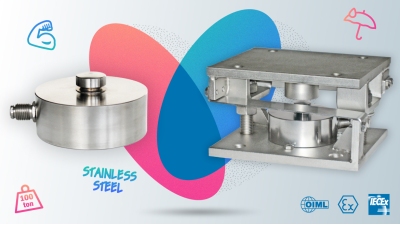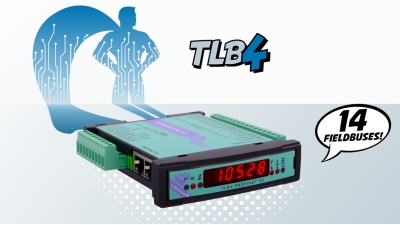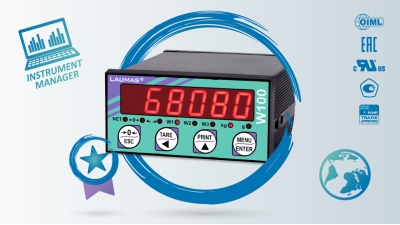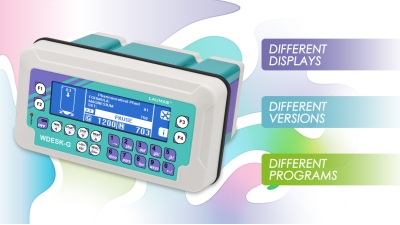Calibration certificate or calibration report?
What are the differences, and what should you consider when choosing the right document.
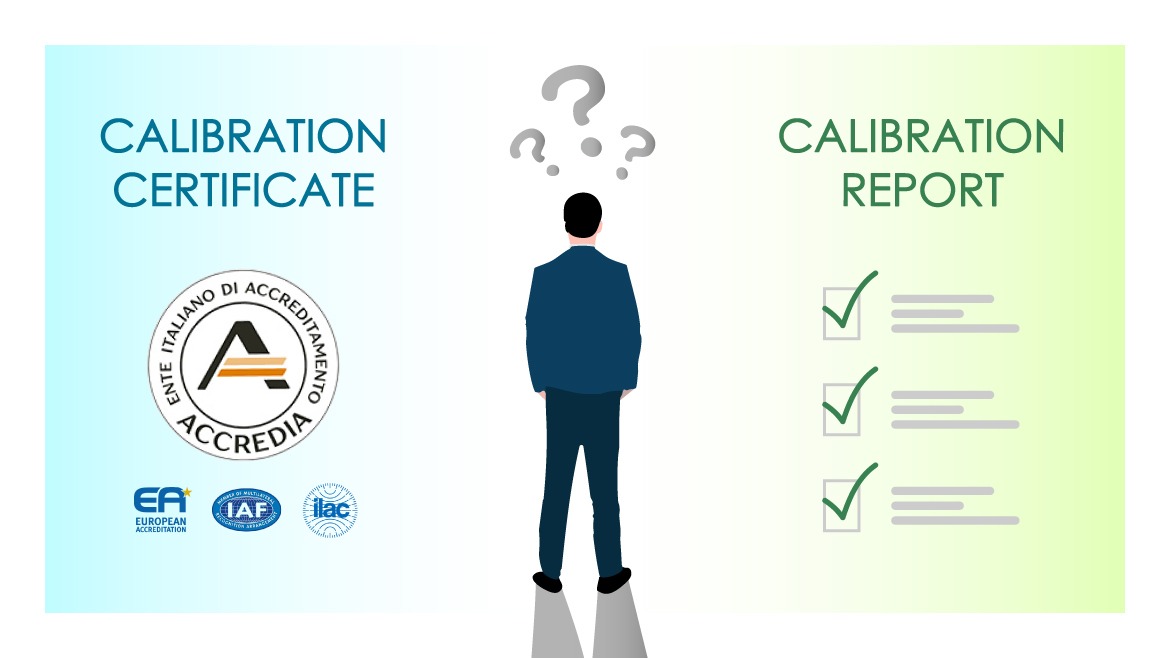
▷ What is calibration and what is it for?
Calibrating a measuring instrument means evaluating its metrological characteristics by comparing it with a reference device of higher accuracy.
It is one of the fundamental requirements to ensure excellence and safety in production processes that use measuring instruments, as well as a necessity to certify their quality in accordance with the ISO 9001 standard.
The calibration of measuring instruments provides useful information to understand whether they meet the established tolerances, or whether is necessary to correct measurement errors to ensure their reliability and accuracy.
When requesting the calibration of a measuring instrument, it must always be accompanied by documentary support: the calibration document.
The calibration document certifies the condition of a weighing instrument and, in the case of accredited certificates, guarantees its compliance with national and/or international regulations. Furthermore, in the event of issues, the presence of a calibration document is useful to demonstrate the proper execution of all maintenance and prevention activities.
To certify the results of calibration, there are 2 types of documents:
Mistakenly, the two documents are often considered synonymous; but what is the difference between a calibration certificate and a calibration report?
Accredited calibration certificate
▷ What is a calibration certificate?
An accredited calibration certificate is an official document certifying that a measuring instrument has been calibrated in accordance with national or international standards, under the supervision of the national accreditation body.
▷ Who issues calibration certificates?
In Italy, calibration certificates are issued by LAT laboratories accredited by Accredia, which is why it is also referred to as an "Accredia calibration certificate" or "LAT calibration certificate".
A certificate issued by an accredited calibration laboratory ensures that the measurement results obtained are traceable to national and international measurement standards and are covered by the mutual recognition agreements of EA (valid in Europe), IAF (international), and ILAC (international).
This means that the measurements and any declaration of conformity issued by a LAT center are recognized and accepted in all other countries that have signed the agreement.
▷ Who can request a calibration certificate?
Accredited calibration certificates can be requested by public or private entities.
The test can be carried out either in a laboratory or "on-site" and is useful for verifying the accuracy and reliability of measurements taken by an instrument. If deemed suitable, the instrument can then be used as a referent measurement standard for calibrating other instruments.
LAUMAS is an Accredia-accredited laboratory (LAT No. 02141). We perform accredited calibrations, under compression and tension, for load cells with or without a connected instrument.
▷ What guarantees does an accredited calibration provide?
Accredited calibrations are guaranteed by Accredia, which ensures their reliability through:
- approval of the technical procedures of the laboratory conducting the tests;
- periodic inspection visits;
- verification of interlaboratory comparisons (ILCs), i.e., tests that allow a single laboratory to compare itself with others to obtain feedback on the reliability of its performance or to investigate potential issues.
What happens if the instrument is not compliant?
If, after accredited calibration, the instrument is found to be outside the specified ranges and a decision is made to correct it, i.e., to proceed with adjustment, a calibration certificate must be issued for the instrument before the adjustment ("as found") and after its maintenance ("as left"). This ensures that it is clearly documented that the instrument has been brought back within tolerance parameters.
These documents must then be retained to demonstrate, in case of issues, that the appropriate maintenance procedures have been carried out.
▷ How long does a calibration certificate last?
Generally, an Accredia calibration certificate does not have a fixed expiration date.
The document certifies that the instrument has been verified and is compliant at the time of calibration, but obtaining compliance does not guarantee that the instrument will remain accurate over time, as accuracy can diminish with use.
It is therefore up to companies to determine how often to calibrate their measuring instruments: the interval can vary from 6 months to a year or more, depending on the type of instrument, its usage, and the regulations and requirements of the industry in which the company operates.
For load cells, for example, the standard most commonly referenced in Europe is UNI EN ISO 376, which establishes a maximum calibration validity period of 26 months.
Calibration report
▷ What is a calibration report?
A calibration report (CR) is a document used to certify whether an instrument can be used during normal production processes.
It is issued by both accredited and non-accredited laboratories, and the instrument is verified by applying internal technical procedures chosen by the individual laboratory, always using certified weight samples (load cells, sample weights, etc.) as a benchmark.
LAUMAS, too, issues calibration reports.
We perform calibration tests under tension and compression through linearity tests and linearity and repeatability tests, valid for quality control purposes in accordance with the UNI EN ISO 9001 standard.
▷ When to request a calibration report?
A calibration report is usually requested for internal checks on devices used for:
- regular production activities (e.g., scales, load cells);
- company testing and inspection (e.g., pressure switches, multimeters, thermometers, pressure gages, vernier calipers, dial indicators, micrometers, etc.);
- field measurements.
A calibration report can also be useful for tracking the results obtained over time from an instrument or measuring device.
Calibration reports do not have a predefined validity period; instead, it must be determined by the person requesting it based on the frequency of use of the instrument and the criticality of the process in which it is employed.
Which document to choose?
The choice between an Accredia calibration certificate and a calibration report depends on your specific needs, as well as the regulations governing the use of measuring instruments.
Generally, an accredited calibration certificate offers greater assurance regarding the reliability of the results and has legal value, while calibration report is usually sufficient to comply with the obligations for monitoring measuring instruments that affect production quality as set out in UNI EN ISO 9001.
A calibration certificate also includes detailed information about the LAT laboratory that performed the calibration, the calibrated instrument, the applied standard, and the obtained results along with the measurement uncertainty value.
Calibration reports, on the other hand, are carried out using internal metrological procedures of individual laboratories and, lacking recognized documentary value, do not officially guarantee measurement traceability to national and international standards and are not covered by international mutual recognition agreements.

